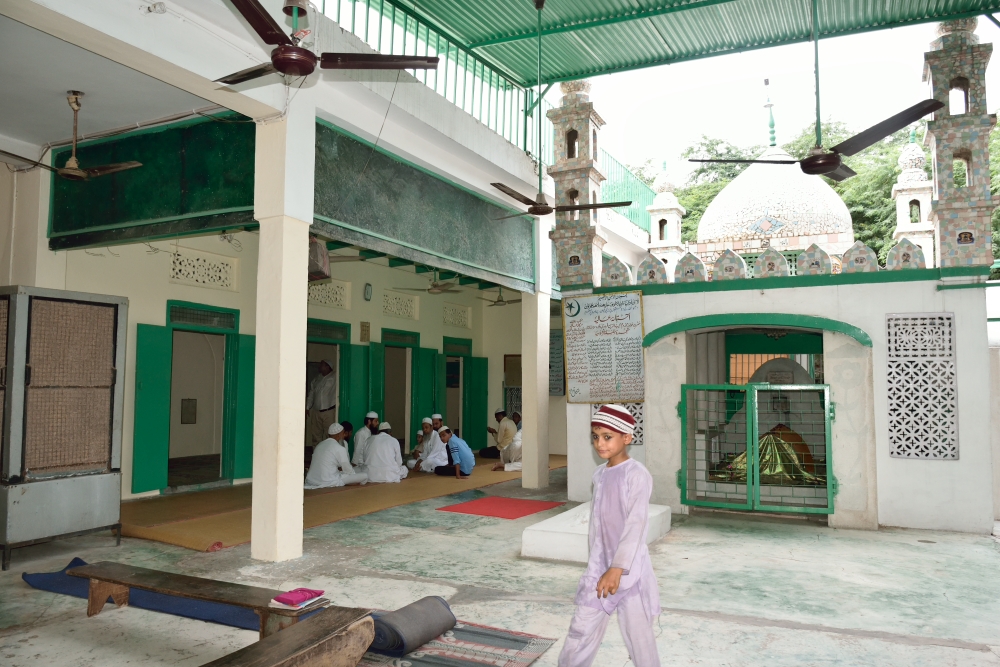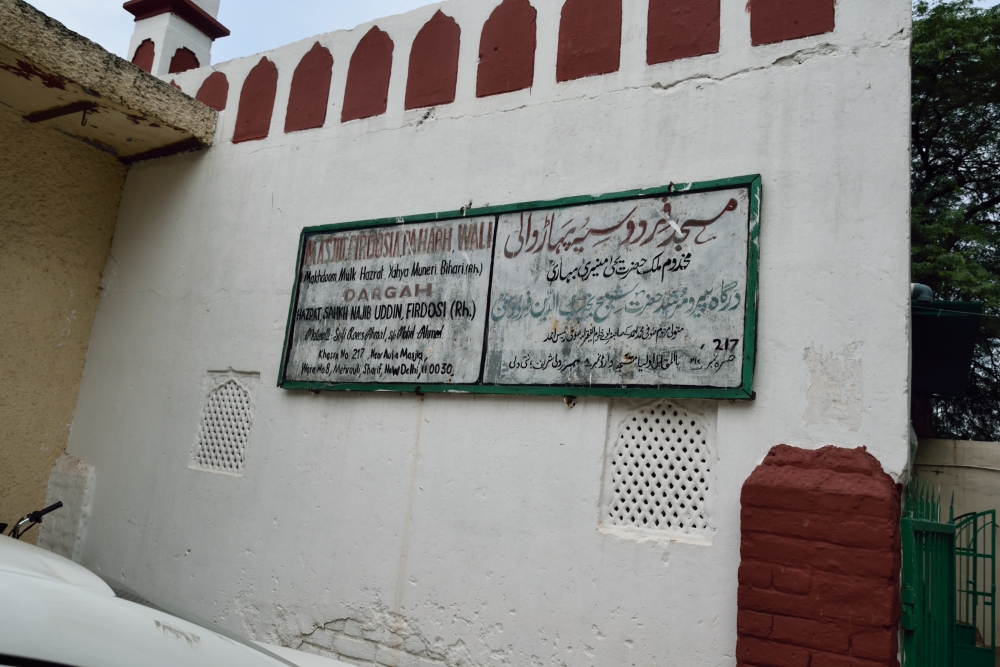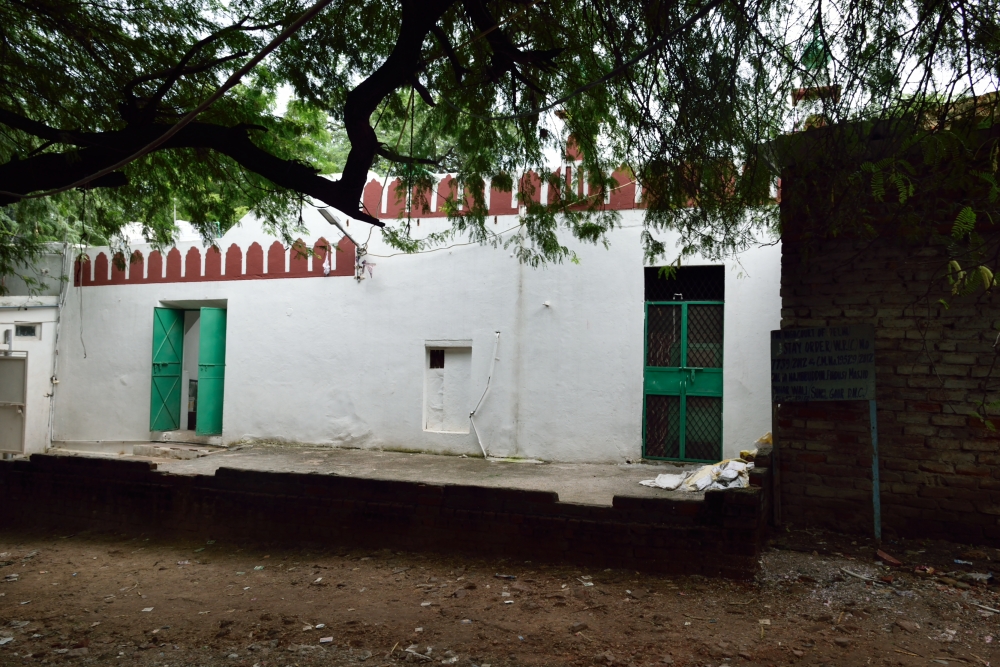




The site is located approximately 650 meters to the southwest of the Mehrauli bus terminal, accessible via Kalka Das Marg. If traveling from the Qutub Minar Metro Station, the distance is about 2.5 kilometers to the northwest, following NH 148A. From there, one needs to take a right turn onto Kalka Das Marg, which is situated west of the Mehrauli-Gurugram Road. A road branching off from Kalka Das Marg leads directly to the cremation ground, providing access to the site. For those arriving by air, the nearest airport is Indira Gandhi International (IGI) Airport. Travelers coming by train can reach the site via Nizamuddin Railway Station, which is the closest major railway hub. Additionally, the nearest bus station is Mehrauli Bus Stand, making it a convenient point for public transport users.
The mosque is an integral part of the historic grave enclosure of Sheikh Najibuddin Firdausi, who was the son of Khwaja Imaduddin. Sheikh Najibuddin Firdausi was a prominent Sufi saint and the devoted disciple and successor of Shaikh Ruknuddin Firdausi. After the passing of his mentor, he dedicated his life to guiding and teaching the public in matters of spirituality and religious knowledge. This historical site continues to be an important religious center, where regular prayers and other significant religious ceremonies are conducted. Architecturally, the mosque is built in the Tughlaq style, characterized by simplicity and robust construction. The structure is rectangular in plan, with a prominent western Qibla wall featuring three mihrab recesses. The central mihrab is distinguished by a raised wall and contains remnants of an ancient Quranic inscription, which was originally crafted in incised plaster. The mosque is designed with a forecourt, allowing worshippers to gather before entering the main prayer hall. Entry to the mosque is facilitated through arched gateways located on both the northern and southern sides. The parapet wall of the mosque is adorned with kangura battlements, a decorative feature typical of Tughlaq-era architecture. The primary construction material of the mosque is rubble masonry, which has been plastered at the plinth level to provide stability and durability. Over time, certain alterations and additions have been made, including the use of brick and cement plaster on the walls. The courtyard, which serves as an essential gathering space, has been cemented to provide a smooth surface for worshippers. Additionally, a corrugated sheet has been installed to cover the courtyard, likely to offer protection from the elements. Despite these modifications, the mosque retains its historical significance and continues to be a site of religious and architectural heritage.
Year of Built: 14th - 15th Century
Address: Ghausiya Colony, Aam Bagh, Ward No. 8, Mehrauli
Country: India
State: Delhi
District: South Delhi
Pincode: 110030
Longitude: 77 10 48
Latitude: 28 30 42